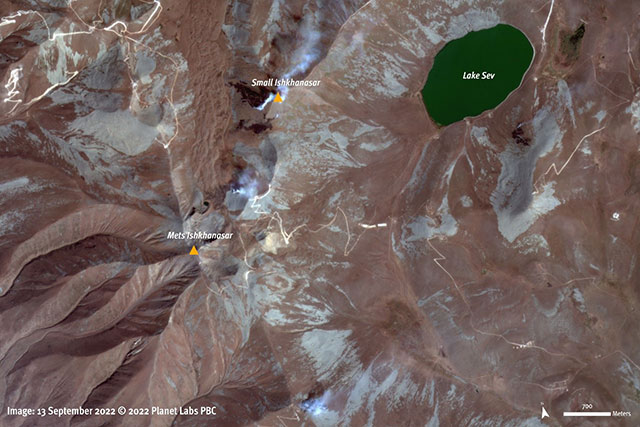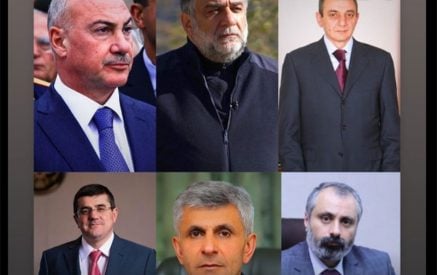Hold Those Responsible to Account
(Berlin, October 14, 2022) – The execution of Armenian prisoners of war (POWs), apparently by Azerbaijani forces during fighting between the countries in September 2022 is a war crime for which there needs to be accountability, Human Rights Watch said today. Human Rights Watch analyzed a video posted on social media in early October showing the extrajudicial execution of at least seven Armenian POWs, apparently by Azerbaijani forces.
Azerbaijani authorities should ensure that the investigation opened by their prosecutor’s office is effective and leads to accountability for the soldiers and commanders responsible.
Read also
“Killing soldiers who have surrendered is a heinous war crime,” said Hugh Williamson, Europe and Central Asia director at Human Rights Watch. “Azerbaijani authorities have opened an investigation that, in addition to leading to accountability, needs to be a key element in ensuring that such outrages never happen again.”
The killings took place during fighting between Armenian and Azerbaijani forces that broke out in mid-September, when Azerbaijan made incursions into Armenia and along the border. The fighting was one of several breakdowns of the Russia-brokered 2020 truce that ended hostilities over the unresolved conflict over Nagorno-Karabakh.
On October 2, Azerbaijan’s Prosecutor General’s Office stated that the military prosecutor’s office had started a “comprehensive investigation” into the video of the executions to determine whether it was authentic, and if so “to identify the servicemen shown on them…. As a result of the investigation, legal measures will be taken.”
Human Rights Watch verified the 40-second video through a variety of techniques, including by consulting with weapons and medical experts, analyzing the language heard in the video, and using reverse search image engines to establish if the video had been posted online before mid-September.
The earliest appearance online of the video was on Telegram, posted just before midnight CET on October 1. It shows at least 15 soldiers, who appear to be Azerbaijani, rounding up a group of eight unarmed men wearing Armenian military uniforms. The camouflage pattern on the soldiers’ uniforms is consistent with the Azerbaijani army, but no insignia are recognizable. One soldier in an apparent Azerbaijani uniform is also wearing what appears to be a backpack with a radio in it, which further corroborates findings that they are Azerbaijani forces.
Nineteen seconds into the video, one soldier starts to fire with a Kalashnikov-type assault rifle into the group of unarmed men seated on the ground. A shout of “don’t shoot,” (vurma in Azeri) is heard just after the shooting starts. At least two other soldiers join in the shooting. The shooting is at close range and lasts for an initial 12 seconds. Sporadic rifle fire continues thereafter until the end of the video.
The shooting appears to kill at least seven of the men. Rohini Haar, an emergency physician with expertise in health and human rights, who is an adjunct professor at the University of California-Berkeley School of Public Health, told Human Rights Watch that the likelihood of survival from sustained close-range automatic and semi-automatic rifle fire in this manner is low.
On October 2, a Twitter account reported that the location of the executions was between Mount Mets Ishkhanasar and Small Ishkhanasar Mountain, close to Lake Sev, on Armenia’s southeastern border with Azerbaijan. Human Rights Watch contacted the account owner to request information. The account owner replied to ask why Human Rights Watch was reaching out but did not reply to any questions. An investigation conducted by the French newspaper Libération, published on October 5, found that the video had been filmed along the same ridge identified by the Twitter account.
Human Rights Watch analyzed satellite imagery taken on September 13 and 14 from this location and applied a variety of techniques, including 3D modeling, geolocation, and photogrammetry, which involves taking measurements using photography to establish exactly where the video was recorded. Human Rights Watch was unable to independently verify the exact location of the executions.
Satellite imagery captured at 9:19 a.m. CET on September 13 shows smoke plumes and burn scars on the area of mounts Mets Ishkhanasar and Small Ishkhanasar. 24 hours before, on September 12, no signs of active fires or burn scars were visible on satellite imagery. The deputy mayor of Goris, a town in southern Armenia about 15 kilometers from Mount Mets Ishkhanasar, reported fighting in the area on the afternoon of September 13.
The Armenian Ombudswoman’s office told Human Rights Watch that the incident took place on September 13 between 6 and 7 a.m. local time. The low position of the sun in the video indicates it was filmed at dawn or sunset. The lack of snow on the mountains is also consistent with late summer for the region.
One male voice is heard throughout the video. Human Rights Watch could not determine whether the speaker was the person filming the scene. The male voice, speaking in Azeri, repeatedly urges, “Don’t shoot!” (vurma) and “stop” (saxla). At 30 seconds into the video, what appears to be the person filming the scene also lifts a Kalashnikov-type rifle and fires several times into a body of one of the prisoners of war lying on the ground.
Human Rights Watch also analyzed several photographs posted to Telegram on September 13 at 10:30 a.m. CET, showing the bodies of nine apparently dead men in Armenian military uniforms. Human Rights Watch confirmed that at least two of the bodies are of men who appear in the video. The terrain in all the photographs is highly consistent with the terrain in the video.
International humanitarian law, or the laws of war, requires parties to an international armed conflict to treat POWs humanely in all circumstances. The Third Geneva Convention governs the treatment of prisoners of war, effective from the moment of capture. It protects POWs “particularly against acts of violence or intimidation, and against insults and public curiosity.” It is a war crime to willfully kill, mistreat, or torture POWs, or to willfully cause great suffering or serious injury to body or health.
In addition to being bound by customary international law on human rights and humanitarian law, Azerbaijan is a party to the Geneva Conventions, the International Covenant on Civil and Political Rights (ICCPR), and the European Convention on Human Rights (ECHR), the last two of which strictly forbid extrajudicial killings.
“These soldiers had been captured and laid down their arms,” Williamson said. “Their captors had an obligation to treat them humanely, and instead it appears that Azerbaijani forces shot them in cold blood. Now they need to be held accountable.”























































